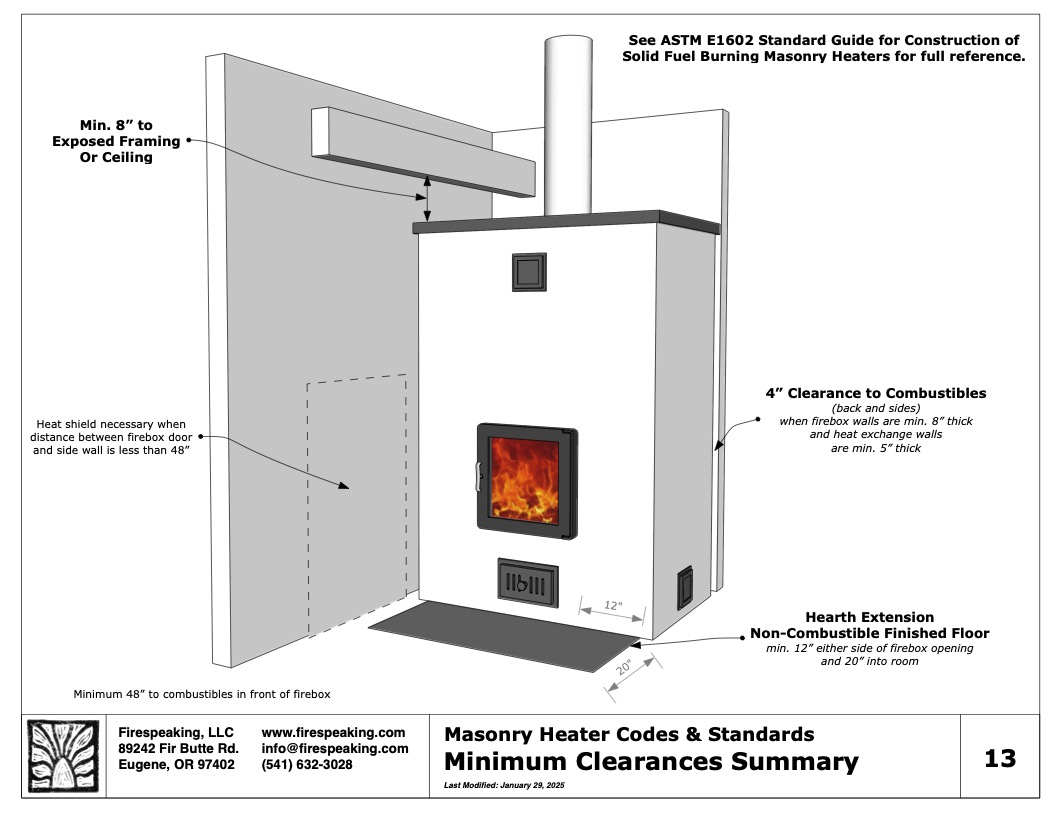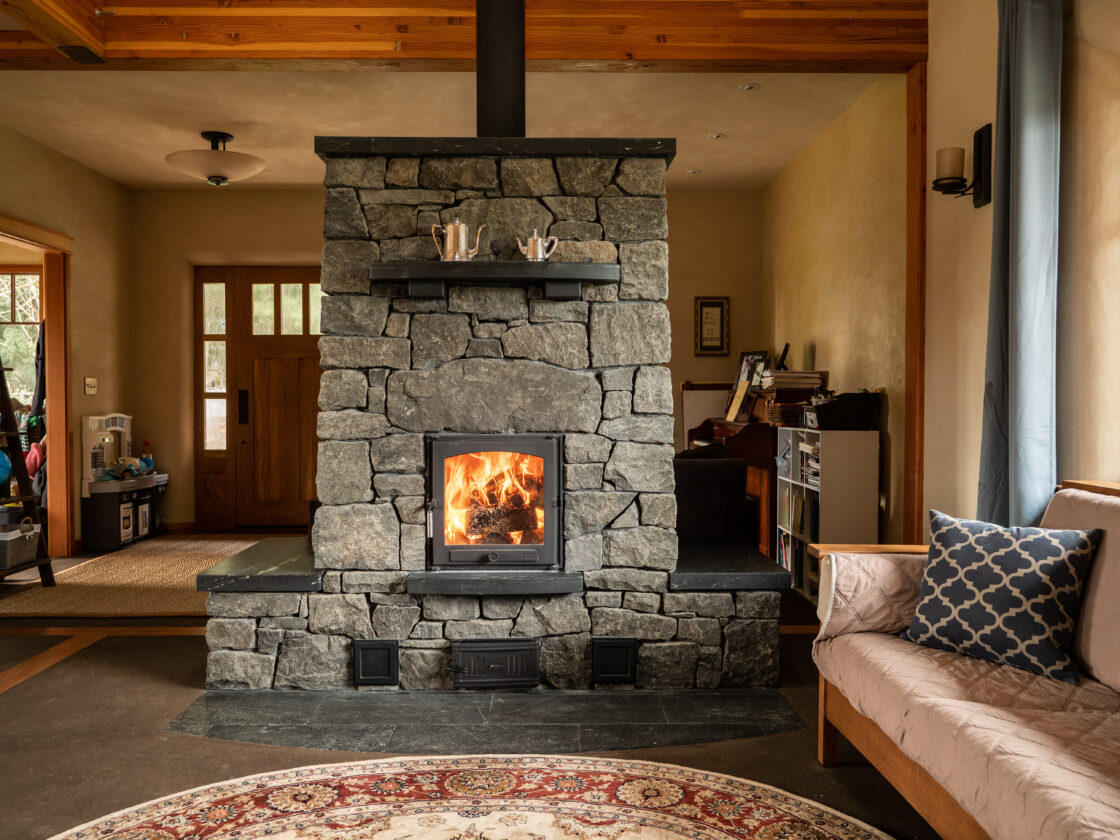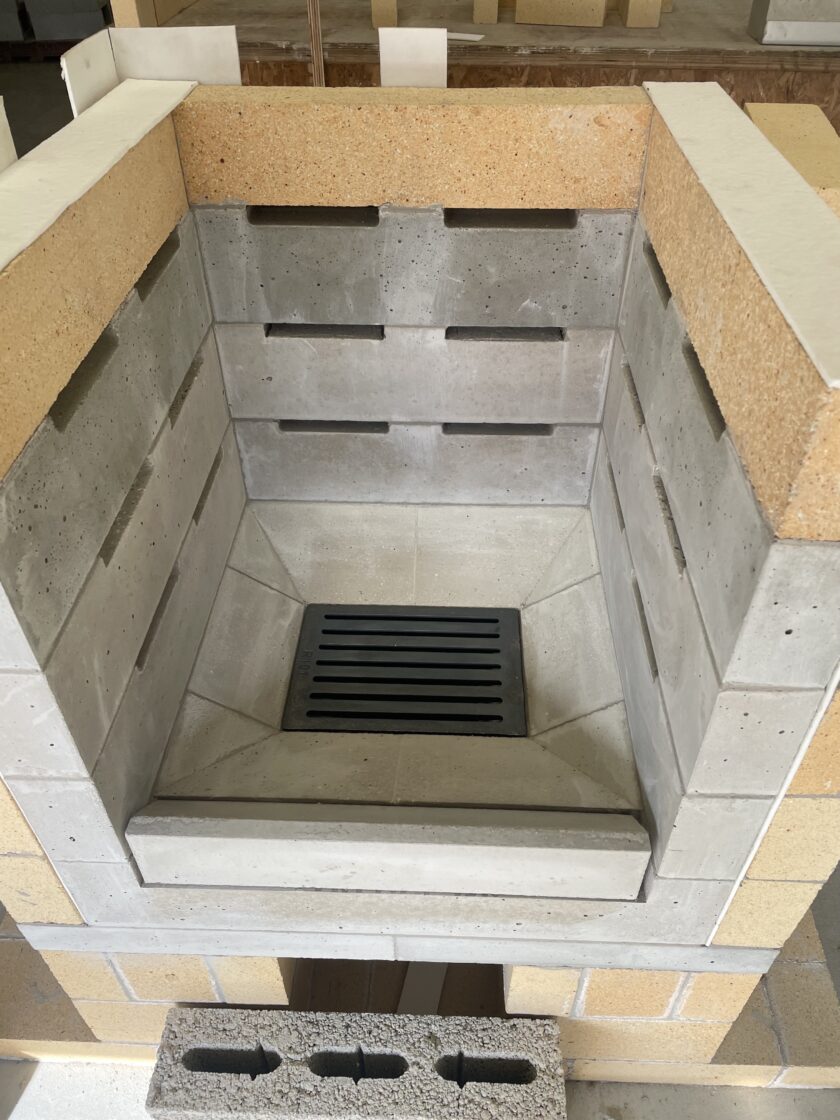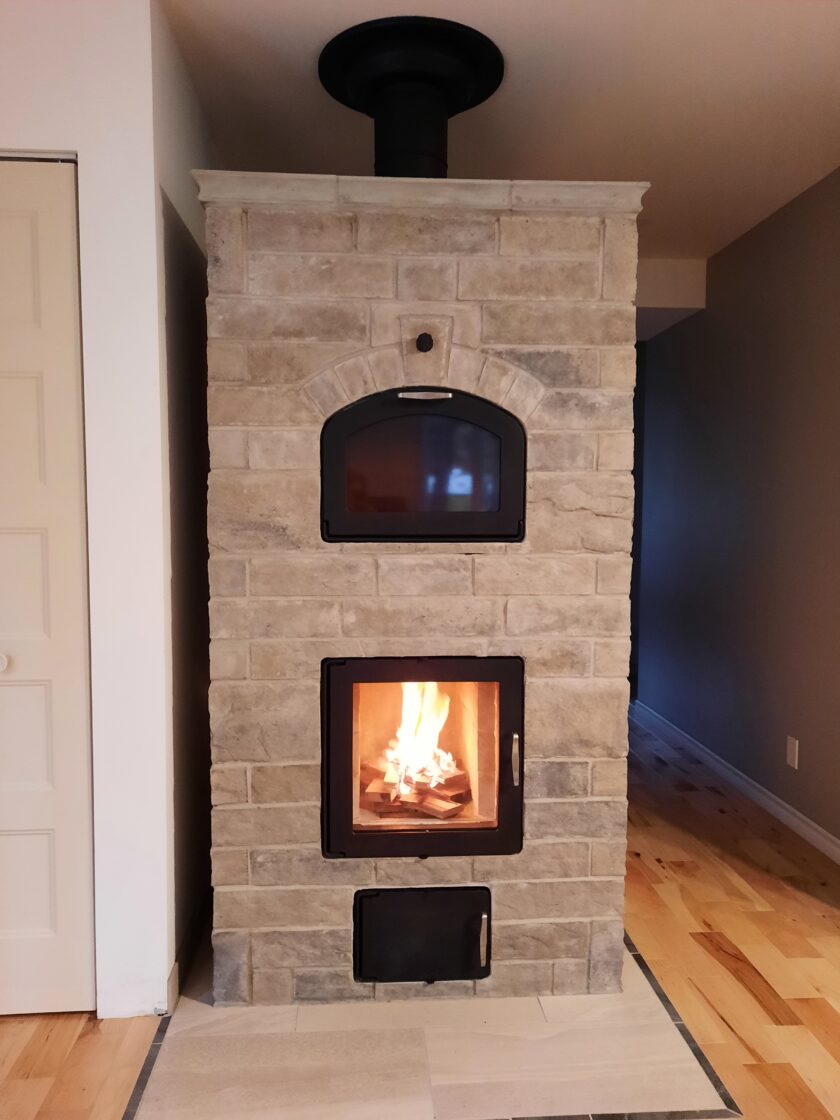I was invited to examine a masonry heater that was built by another mason in a town one hour north of us. One of the wooden studs immediately behind the heater, in the wall adjoining their bedroom, had been heated to the point that it had at least reached a smoldering point inside the wall. They smelled smoke and called the fire department who came promptly and tore the drywall off from the bedroom side and were able to extinguish the smoldering wall framing with relative ease compared to the possible consequences had such a fire gotten out of control.



I am a professional heater mason with 10 years of experience in the trade and have been a full voting member of the Masonry Heater Association of North America for as long. I underwent mentorship in my training and continue to maintain ties with my colleagues to discuss best practices. I have been a part of over 25 masonry heaters installations.
While the stone work on the masonry heater in question is impressive and clearly the work of a craftsperson, the details of how the functional parts of the masonry heater was built raise several points of concern.
The most important oversight was a complete lack of respect to necessary clearances to combustibles. The proper clearance to combustibles behind a masonry heater placed in front of a wall made of combustible material is 4†(refer to attached excerpt from ASTM standard for site-built heaters). The 4†cavity should be open to air movement to prevent static heat from building up by providing vents low and high to provide for natural convection. In order to remedy this particular situation, all the walls adjoining the heater would have to be re-built such that they respect this clearance. Also see ASTM standard for a full list of clearances, including vertical clearances, 2†clearance to combustibles for framing around heater foundation, as well as for “wing walls†in the case of masonry which abuts combustibles.
I also observed cracks in the masonry facing near the smoldered framing. Cracks appear in masonry subject to relatively high temperatures because the materials expand when heated. Apparently this heater had previously experienced enough cracking in the mortar joints between the stone on the front that the mason had to tear off a good portion of the stone work retroactively and installed a ceramic wool/paper gasket on a portion of the heater before rebuilding the stone work.
In order to prevent such issues, a well-built masonry heater has a refractory “core†and a masonry “facing†which are separated by an expansion joint. This allows the inside of the heater to expand and contract where it is hottest and maintain the more decorative facing. Even with these precautions, heaters may experience hairline cracks in the facing which do not impair the operation of the heater.
While it is likely that the existing cracks in this heater are not sufficient to affect the function of the heater, they should be addressed before the wall cavity is closed back up. In order to remedy this situation, all mortar slush should be chiseled to a flat plane, a full sheet covering of ¼†ceramic paper should be placed against the back of the heater and then secured with sheets of galvanized sheet metal attached with masonry anchors. This remedy does not reduce required clearance to combustibles and should only be considered as a retroactive patch. In new construction, the masonry facing should not be mortared directly to the refractory core.
An additional area of concern includes insufficient inpection to have observed such oversights before they caused a problem. A safe installation requires competence at the point of design, construction, and inspection. Plans for a heater installation should address building safety including required clearances to combustibles. A mason who enters into a contract to build a masonry heater should have sufficient education and training to address all safety concerns. An inspector called to sign off on a heater installation should be aware of the code for site-built heaters. The current code for site-built heaters is initially prescribed by Chapter 10 of the IRC and further specified by the ASTM standard E1602.
Masonry heaters are efficient, clean-burning solid fuel appliances which contribute a high level of warmth and comfort. They are a solution to meeting sustainable residential heating (and cooking) needs. It is important to distinguish this instance of a heater that does not meet best practices with those which are well-built in order to preserve perception of their safety in normal conditions.
-Max Edleson




